
We’ve highlighted how the Russians created a civilization in the North, turning the icy White Sea into the shortest transportation route between Russia and Europe. In these harsh conditions, they learned how to build huge houses where the entire household was hidden under one roof and created their own special cuisine from the local gifts of nature. They also left a huge legacy of artistic crafts, many of which have survived only as museum exhibits.
Tin caskets with a delicate “frosty” shimmering pattern are a unique craft from the town of Veliky Ustyug, Vologda Region. The pattern is applied to a thin sheet of tin through chemical processing and, then, the box is decorated with iron overlays. This craft existed from the 18th century and practically until the end of the 20th century. Ustyug craftsmen would take their boxes to fairs and sell them to Eastern merchants. However, the technology of “frost on tin” is now lost. The last master was Boris Kholmogorov, who, in the 1970s and 1980s, figured out the secret of the craft himself and set up the production of the boxes at a local factory. His “frost boxes” were purchased by museums in Moscow, Vologda, Suzdal and Veliky Ustyug. Sadly, he had no apprentices.
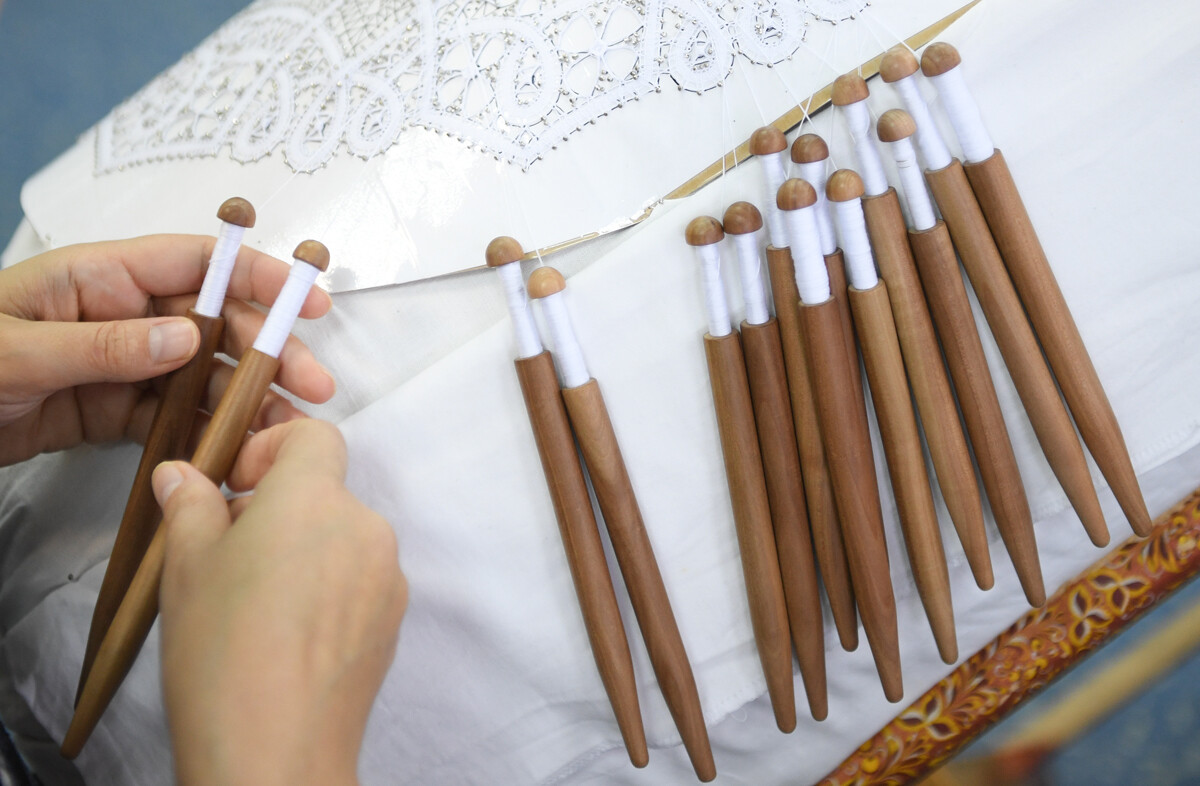
At the Snezhinka plant in Vologda.
Alexei Fillipov/SputnikVologda is famous for its bobbin lace. It seems that craftsmen can make any pattern from thin threads, from classic flowers to fairy tale characters. This craft has existed since at least the beginning of the 19th century and Vologda lace has always been considered very valuable. The Soviet Union even paid its debt to the West for the supply of weapons under the Lend-Lease program during the Great Patriotic War with not only gold and diamonds, but also Vologda lace.
By the way, during the Soviet years, the local lace manufacturer made lace tablecloths and stoles with pictures of Lenin’s mausoleum and sickle and hammer.
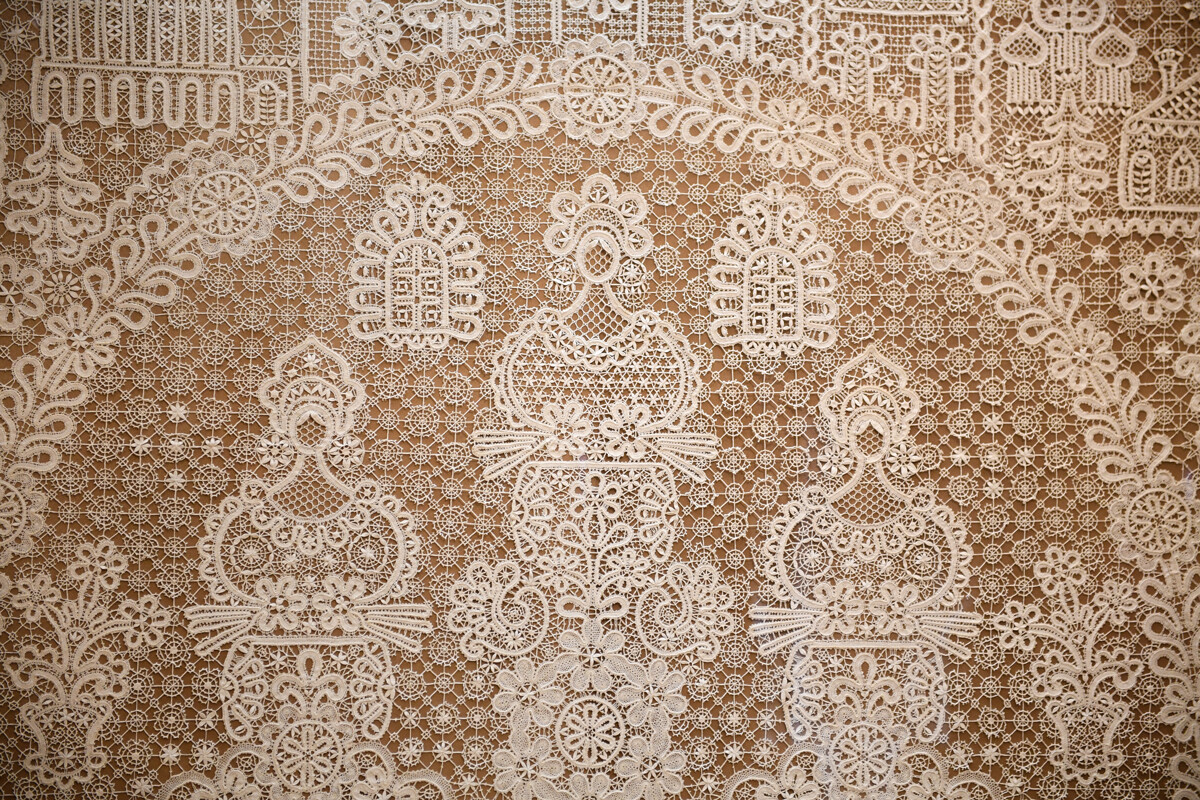
And, thankfully, Vologda lace is still being woven today! You can see the most interesting antique works in the ‘Museum of lace’ in the center of the city. There are also classes for those who want to learn how to work with bobbins.
In the 18th and 19th centuries, northern souvenirs were widespread at fairs - predominantly carved walrus or mammoth tusks made in Kholmogory (Arkhangelsk Region). They depicted scenes from life, portraits, animals, nature. It was a very labor-consuming and, therefore, expensive art. Unlike many other folk crafts, bone carving was not only not lost, but was even actively supported at state level. In the 1930s, there was even a state factory dedicated to artistic bone carving.
Bone carving was very fashionable, but very expensive. So, the carvers of Veliky Ustyug came up with a low-cost equivalent - birch bark carving. In the North, many household items used to be made from birch bark, including cases, skeins and even ropes. And, in the area of Veliky Ustyug, the most famous birch bark craft arose - Shemogodskaya carving (after the name of the region - Shemogodskaya).
Wooden lace also depicts different scenes from life and fairy-tale motifs, but costs much less than bone variants. Modern masters have preserved the craft and continue to produce handmade items at the factory in Veliky Ustyug.
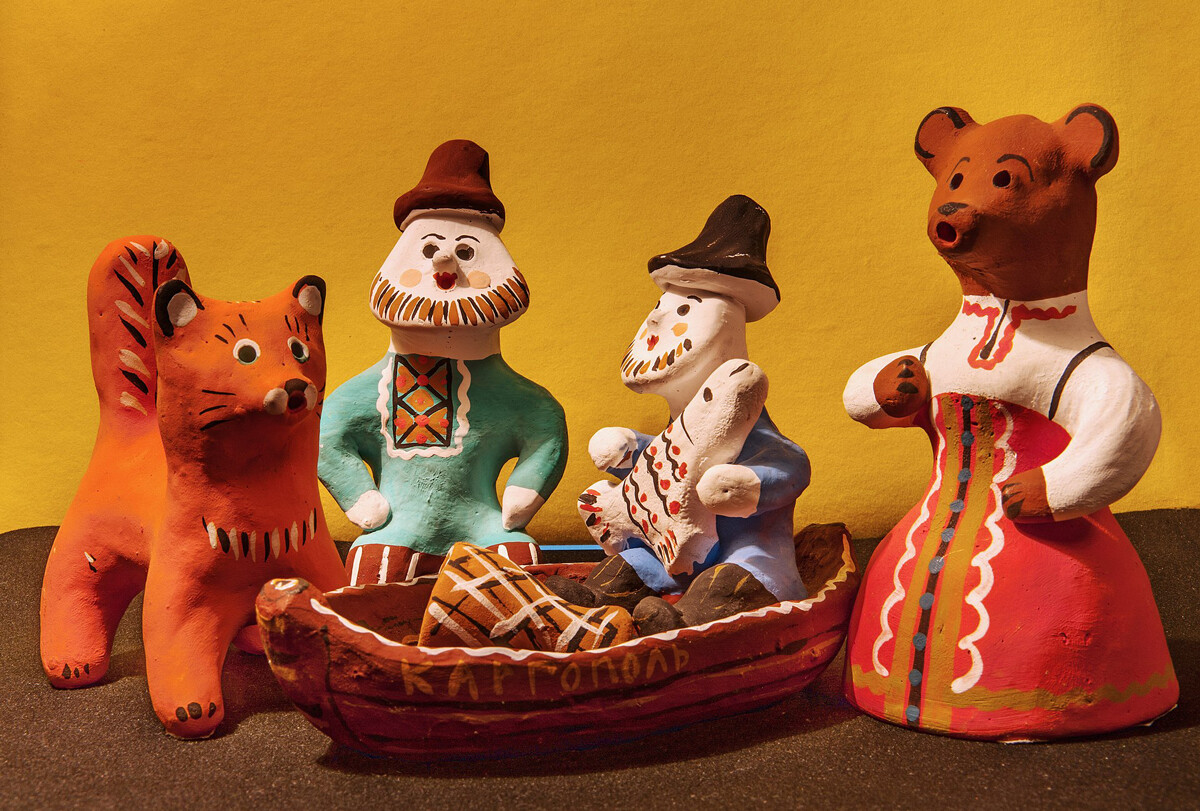
The old Russian town of Kargopol in Arkhangelsk Region is the birthplace of painted clay toys. It’s all about the local red clay. For centuries, craftsmen have been making dishes from it, which were sold at fairs, while the leftover clay was used to make funny figurines of people and animals. After baking in the oven, the figures are placed in a special solution based on flour, which leaves a lace pattern, making these toys look similar to products of the Stone Age. They are still produced in Kargopol and are very popular souvenirs.
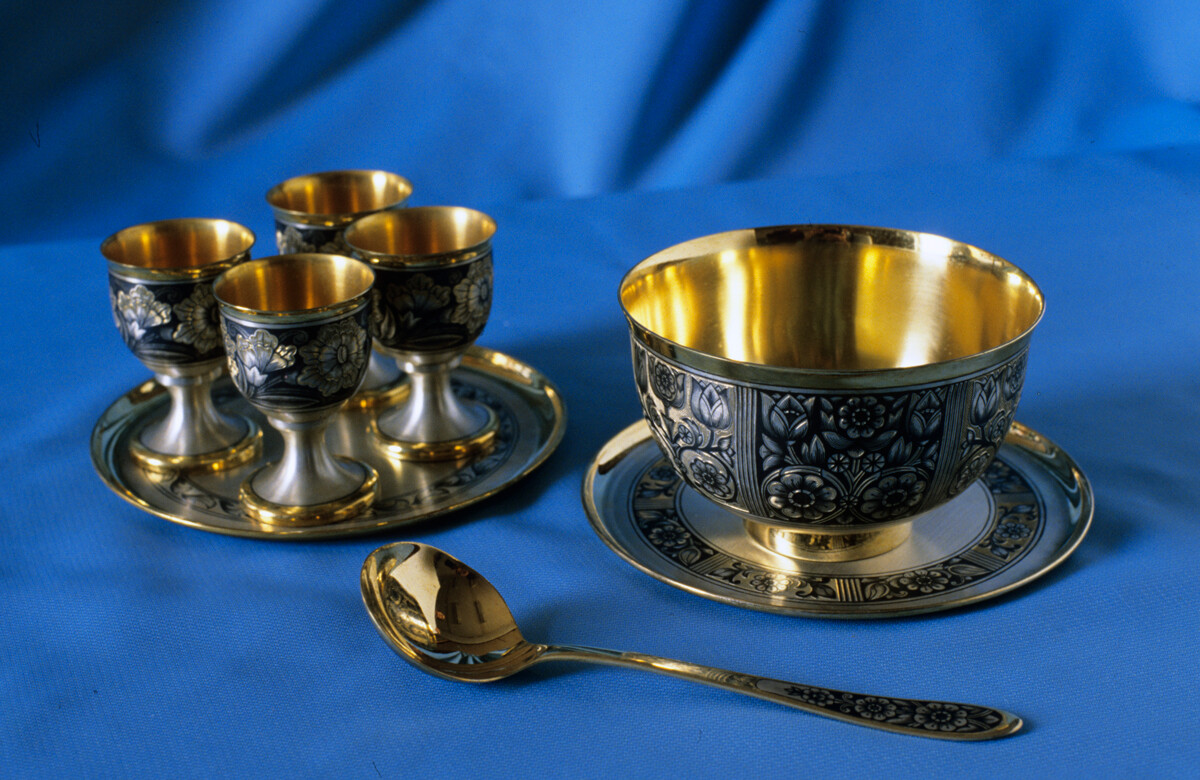
The technique of silver nielloing has been known in Russia since the 10th century, but it was not until the 17th century that it took shape as a trade in Veliky Ustyug. The shape of the drawing is first etched out on the silver and then an alloy of silver, lead, copper and other metals is applied to the grooves. When heated, the alloy combines with the silver, then the excess is scraped off, leaving a pattern. It was at Veliky Ustyug that masters invented a recipe for an especially strong niello and trays and snuff-boxes from the 18th-19th centuries have been preserved in perfect condition to this day. Modern masters make handmade tableware, jewelry, silverware and souvenirs.
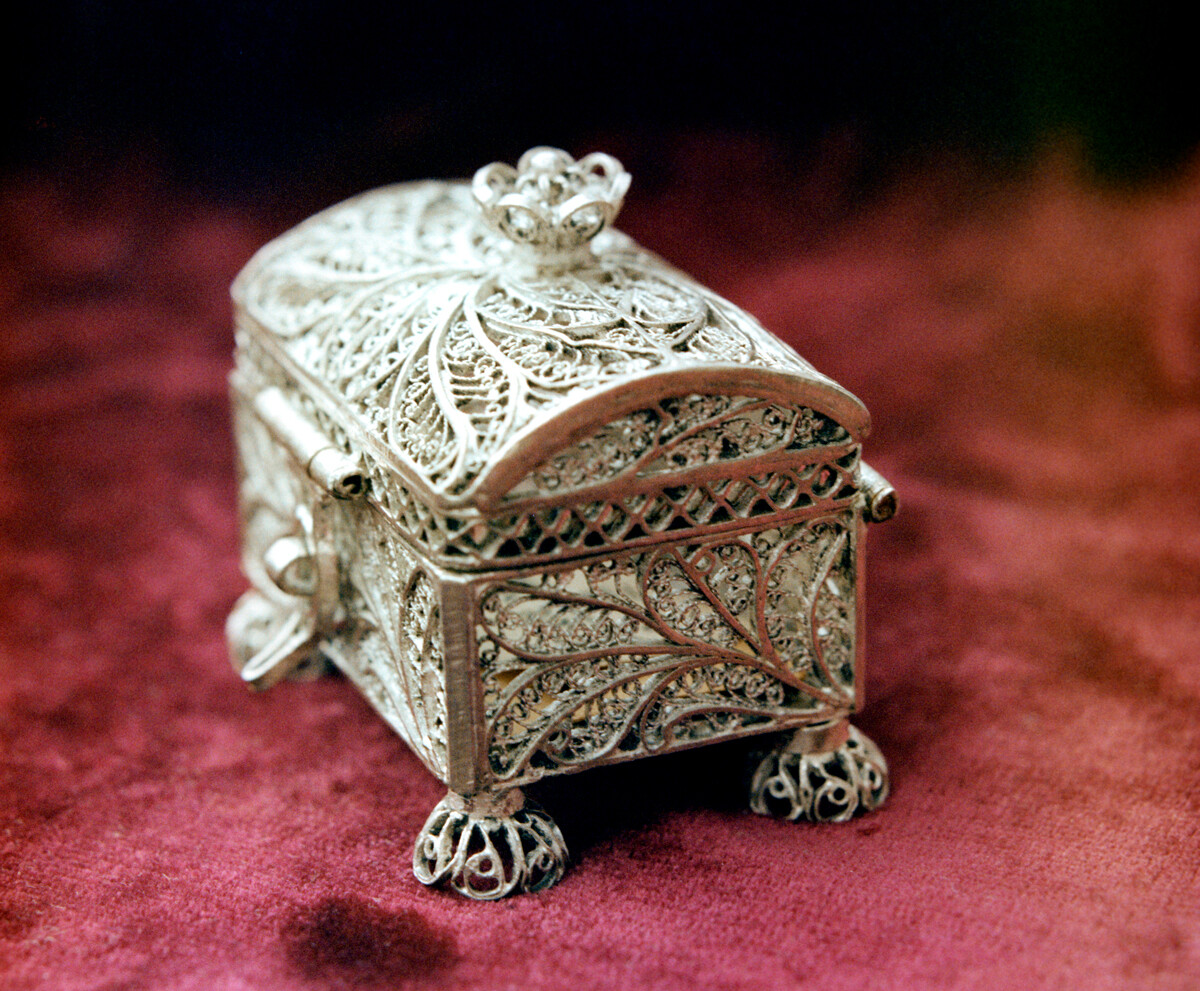
Silver craftsmen are the real wealth of Veliky Ustyug. Just imagine: they made real lace from ultra thin silver wires, decorating all kinds of objects with it. This technique is still used to make souvenir trays, glasses and even samovars.
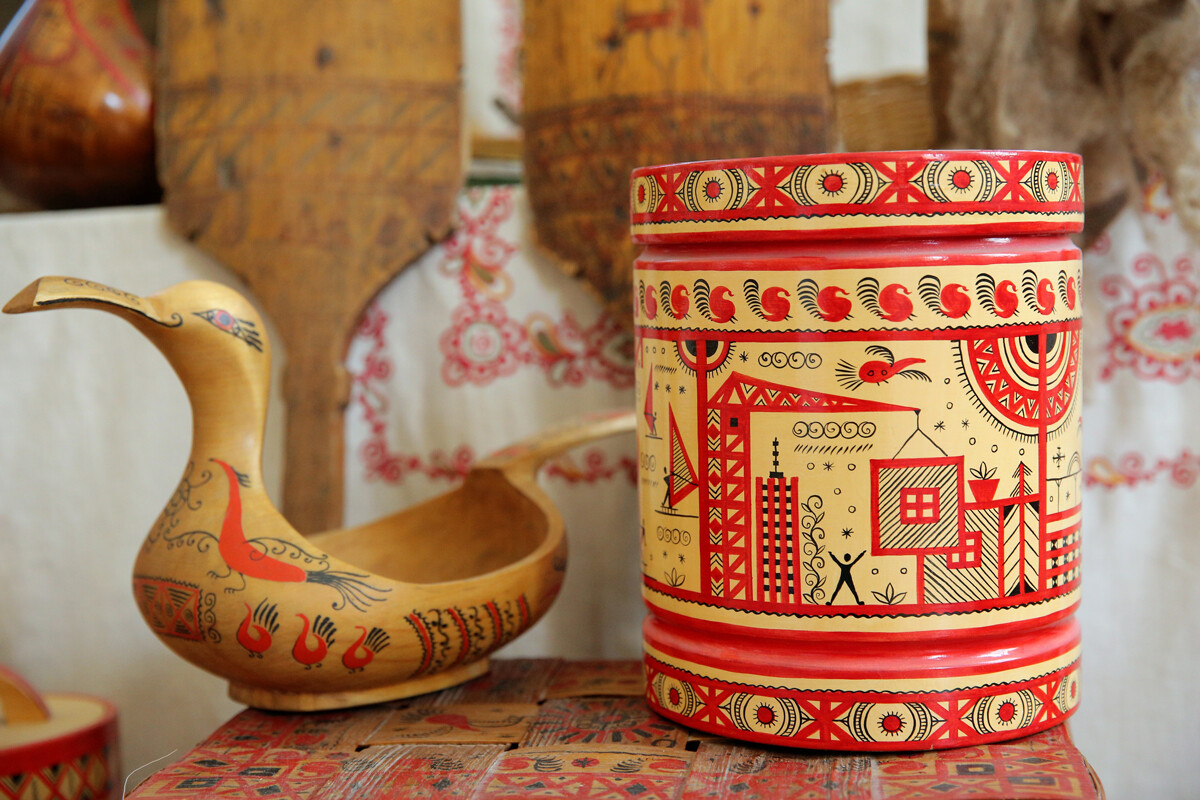
Black and red horses decorated various household utensils of the inhabitants of Mezen (Arkhangelsk Region). Black paint was obtained from charcoal, red - from clay, and the yellowish background became yellowish thanks to… green olives! Chopping boards, barrels and spinners have also survived. Art historians like to pay attention to the nature of the drawing, often finding pagan motifs in them. Artists usually depict figures of horses, birds, deer, the earth and the sky. Mezen painting as a craft was first recorded in the 19th century and survives to this day.
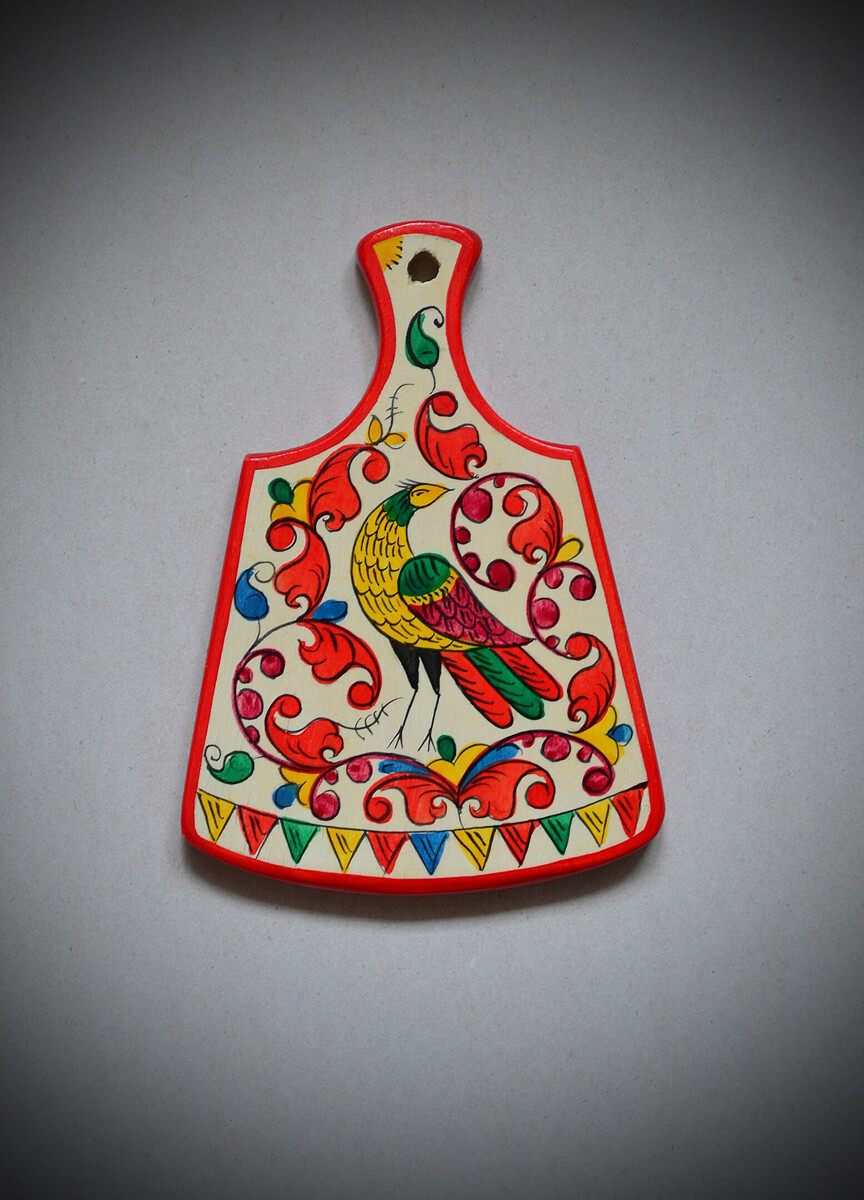
This type of artistic painting on wood appeared in another settlement in the Arkhangelsk region, the village of Borok (the name comes from Marfa Boretskaya, the owner of those lands). It is based on red, yellow and green colorful flowers, plants and animals and is supposed to symbolize the flow of life. Boretskaya painting has survived to this day and is practiced by individual craftsmen in Arkhangelsk Region.
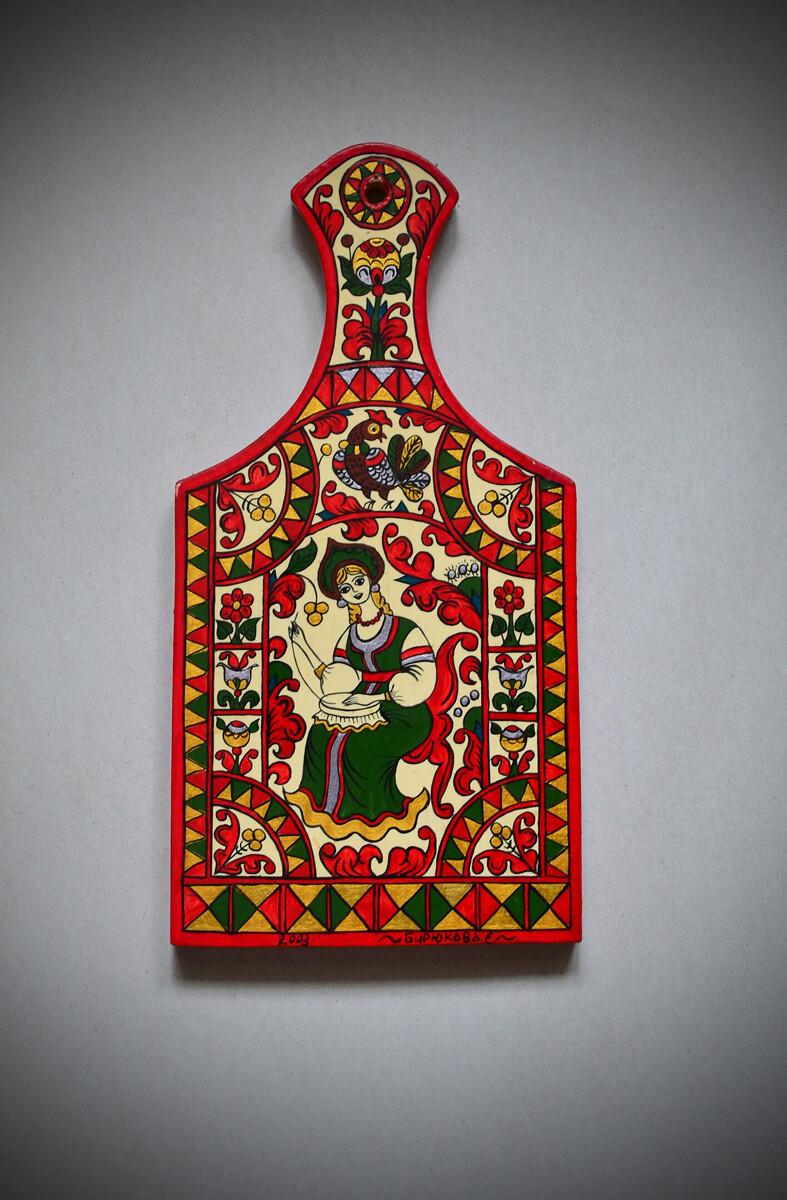
In the vicinity of Borok, Permogorye Region, another type of painting was born. For the most part, local craftsmen depicted the usual scenes of peasant life: girls embroidering their dowry, rides on sleds and so on. But, among them, there were also birds and floral patterns. Most often, this technique was used for painting spindles and chests. Today, Permogorskaya painting continues to be added to local souvenirs.
Dear readers,
Our website and social media accounts are under threat of being restricted or banned, due to the current circumstances. So, to keep up with our latest content, simply do the following:
If using any of Russia Beyond's content, partly or in full, always provide an active hyperlink to the original material.
Subscribe
to our newsletter!
Get the week's best stories straight to your inbox